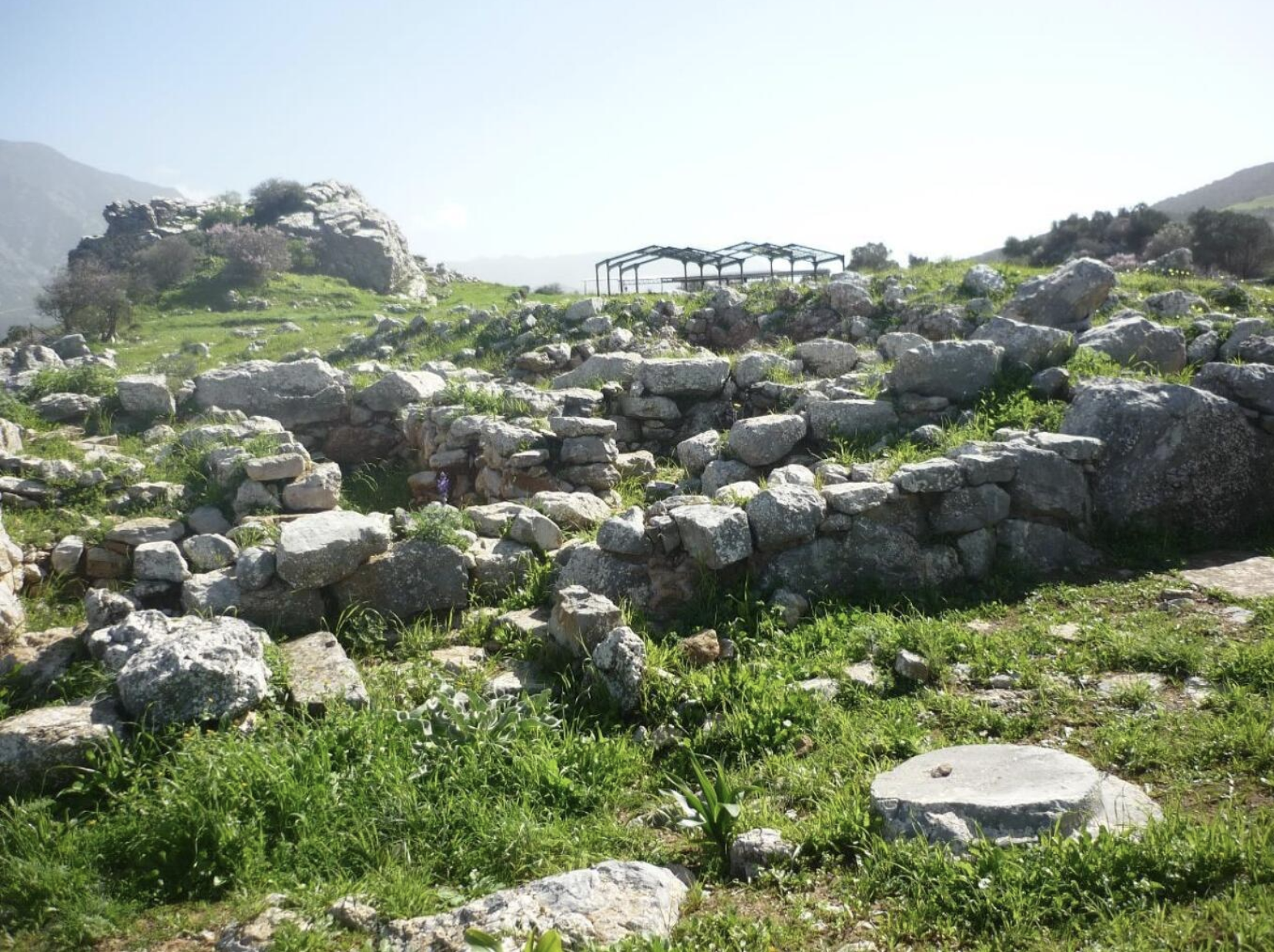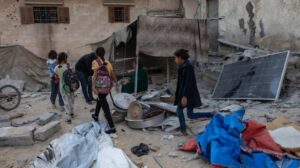The Ministry of Culture is implementing a fire protection project aimed at safeguarding and enhancing the archaeological site of the Minoan palace center in Monastiraki, located in the “Kokkinos Harakas” area in the Amari Valley, on the western slopes of Mount Psiloritis, south of Rethymno.
The site’s primary period of use dates back to the Protopalatial period (1900–1700 BC), covering an estimated 300 stremmata (approximately 74 acres).
Of particular interest is the integrated rainwater management system, dating to the end of the Protopalatial period (1700 BC), which is currently the earliest and only example of its kind for that era. Visible elements include conduits, collection basins, and a circular reservoir. The Monastiraki palace center was destroyed by an earthquake and the subsequent fire, similar to other major palaces in Crete during this period. However, unlike the latter, Monastiraki was abandoned and not rebuilt in the Neopalatial period.
The project includes installing portable dry powder fire extinguishers, a permanent water supply fire-fighting network with 11 fire hose stations, a water reservoir, a fire pump system, and fire-fighting tools at three locations. Portable extinguishers will also be placed in the fire pump station.
“The Minoan palace center at Monastiraki, closely tied to the palace of Phaistos, was established at a strategic location controlling the natural passage connecting the island’s north and south coasts. At its core lies a building with cyclopean masonry and a dentate façade, featuring a Minoan hall with columns, likely used for religious purposes. The storage facilities, where numerous pithoi (storage jars) were found, are the largest ever discovered in a Minoan palace,” stated Minister of Culture Lina Mendoni.
Additionally, a room containing 150 sealings, interpreted as the earliest seal archive, was discovered on-site. The palace’s Protopalatial remains are well-preserved, as it was abandoned and never intensively reoccupied.
Mendoni emphasized, “Active fire protection is part of broader efforts to upgrade the archaeological site and align with the Ministry’s program to mitigate the impacts of climate change on cultural heritage. Once completed, the Monastiraki Amari archaeological site will be safer for visitors, staff, and its significant monuments.”
The project also includes creating visitor paths and proper signage to enhance the overall experience.
Ask me anything
Explore related questions





